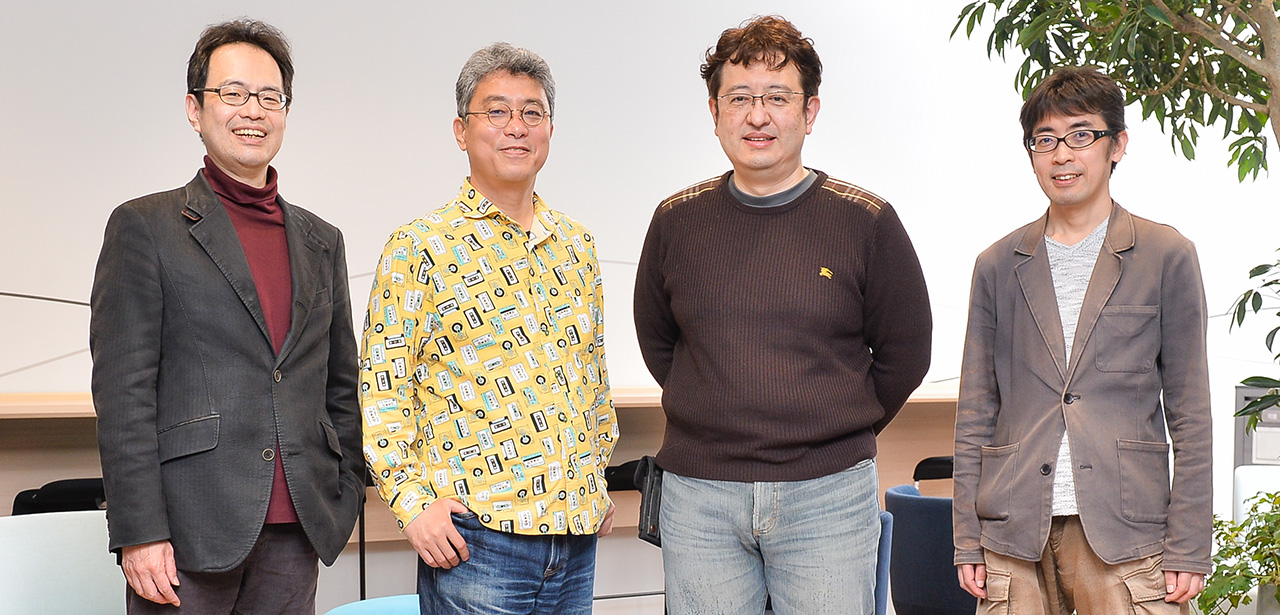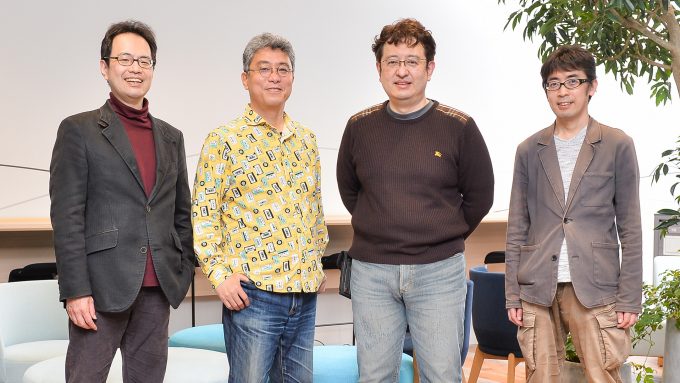“WE DISCUSS VANA’DIEL” is a series of conversations between Producer Matsui and special guests who are familiar with FINAL FANTASY XI (FFXI). In this special edition, FFXI Director Yoji Fujito joined Producer Matsui to speak with our guests. Our guests for this roundtable are Akio Setsumasa and Tsuyoshi Agura, developers of the pioneer series of Japanese online RPGs, Phantasy Star Online. The four developers shared the challenges they faced and other behind-the-scenes stories from the early days of online RPG development for consoles. In this second part, they talked about online games from the late ‘90s and the state of the internet back when PSO was in development.

Network Director of SEGA's Phantasy Star Online 2. He worked on titles including Nights into Dreams, Burning Rangers, and Sonic Adventure during his time as a programmer in Sonic Team, then later joined Phantasy Star Online as a lead programmer. He also oversaw the network-related aspects of Phantasy Star Universe and has continued to work on all Phantasy Star titles thereafter.

Lead Server Programmer of SEGA's Phantasy Star Online 2 New Genesis. In addition to working on Skies of Arcadia Legends, he was involved in several online games for the Dreamcast, including Guru Guru Onsen 2, Sakura Wars Online, and Guru Guru Onsen 3. He has been supporting the Phantasy Star Online series alongside Mr. Setsumasa starting with Phantasy Star Universe. Incidentally, Mr. Agura has been playing FFXI since the beta testing days.
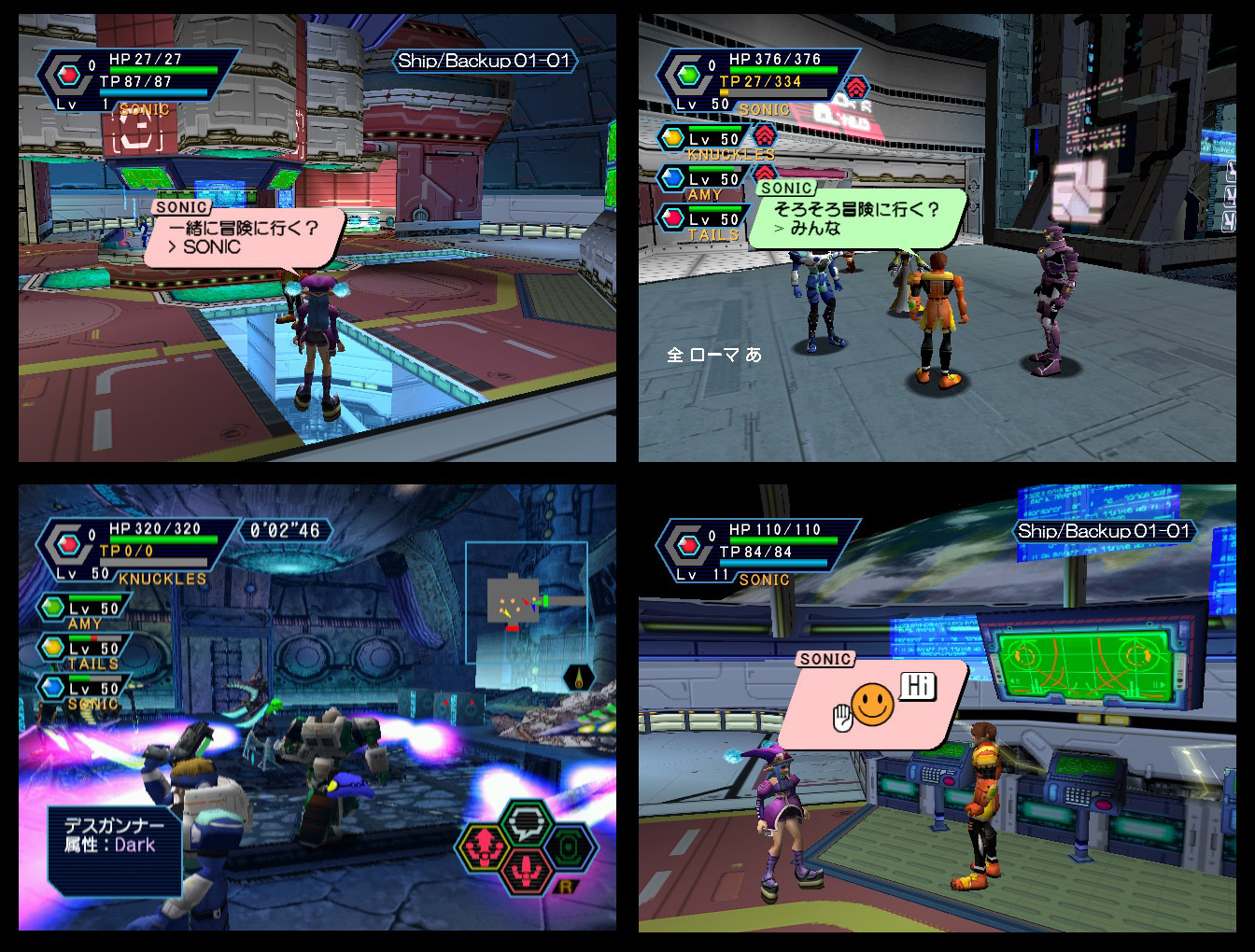 Phantasy Star Online is an action RPG for the Dreamcast released by SEGA in 2000, which introduced online multiplayer to players around the globe as the first 3D online RPG for consoles. It is currently succeeded by the ongoing latest entry in the series, Phantasy Star Online 2 New Genesis.
Phantasy Star Online is an action RPG for the Dreamcast released by SEGA in 2000, which introduced online multiplayer to players around the globe as the first 3D online RPG for consoles. It is currently succeeded by the ongoing latest entry in the series, Phantasy Star Online 2 New Genesis.
Diablo and its influence on many game developers
Online games notably started picking up with gamers around the late ‘90s. Mr. Setsumasa and Mr. Agura, what were the first online games that first caught your attention?
- Setsumasa
The first online game I enjoyed was Diablo, which was truly well-made for a precursor of the genre. I often played before going to bed and ended up pulling all-nighters because I died and had to retrieve my character’s gear.* I even had another PC with a secondary character that I’d use to retrieve gear for my main character.
* Diablo is a hack-and-slash game by Blizzard Entertainment, considered to be a pioneer of multiplayer online role-playing games.
* In Diablo, defeated characters drop their carried items on the ground. - Matsui
A lot of people have told me they were really into Diablo back then. What was it about Diablo that drew your interest?
- Setsumasa
Many RPGs at the time were story-driven and were similar to movies in their presentation, whereas Diablo’s gameplay tickled the nostalgia of old-school games where you single-mindedly defeat enemies over and over. Also, having other players around meant things didn’t always go the way I planned, which I enjoyed.
I heard that you’ve gone to Blizzard Entertainment and met with Diablo’s developers before.
- Setsumasa
That was back in 1998, when I visited their headquarters after E3. The Dreamcast had already been announced, so I went to ask if they wanted to develop games for our console, or perhaps even consider releasing Diablo on the Dreamcast. As it turned out, they gently refused, citing that the differences between developing games for PC and consoles would prove difficult. On the other hand, they graciously answered many of my questions about network-related topics, Diablo, and another game of theirs I enjoyed called StarCraft, and I remember being really happy.
- Matsui
What was your original experience with online games, Mr. Agura?
- Agura
When I was a student, I didn’t have a particular interest in online games. I was aware of titles like Ultima Online* from game magazine articles but never went as far as to actually play them. Later, when I joined SEGA and was delegated to Guru Guru Onsen 2, a coworker told me to “play this game first” which turned out to be Diablo. Diablo was extremely popular even among SEGA employees, and some of them would be playing it through their lunch break.
* Ultima Online is a game released in 1997 widely considered to be a pioneer of the MMORPG genre.
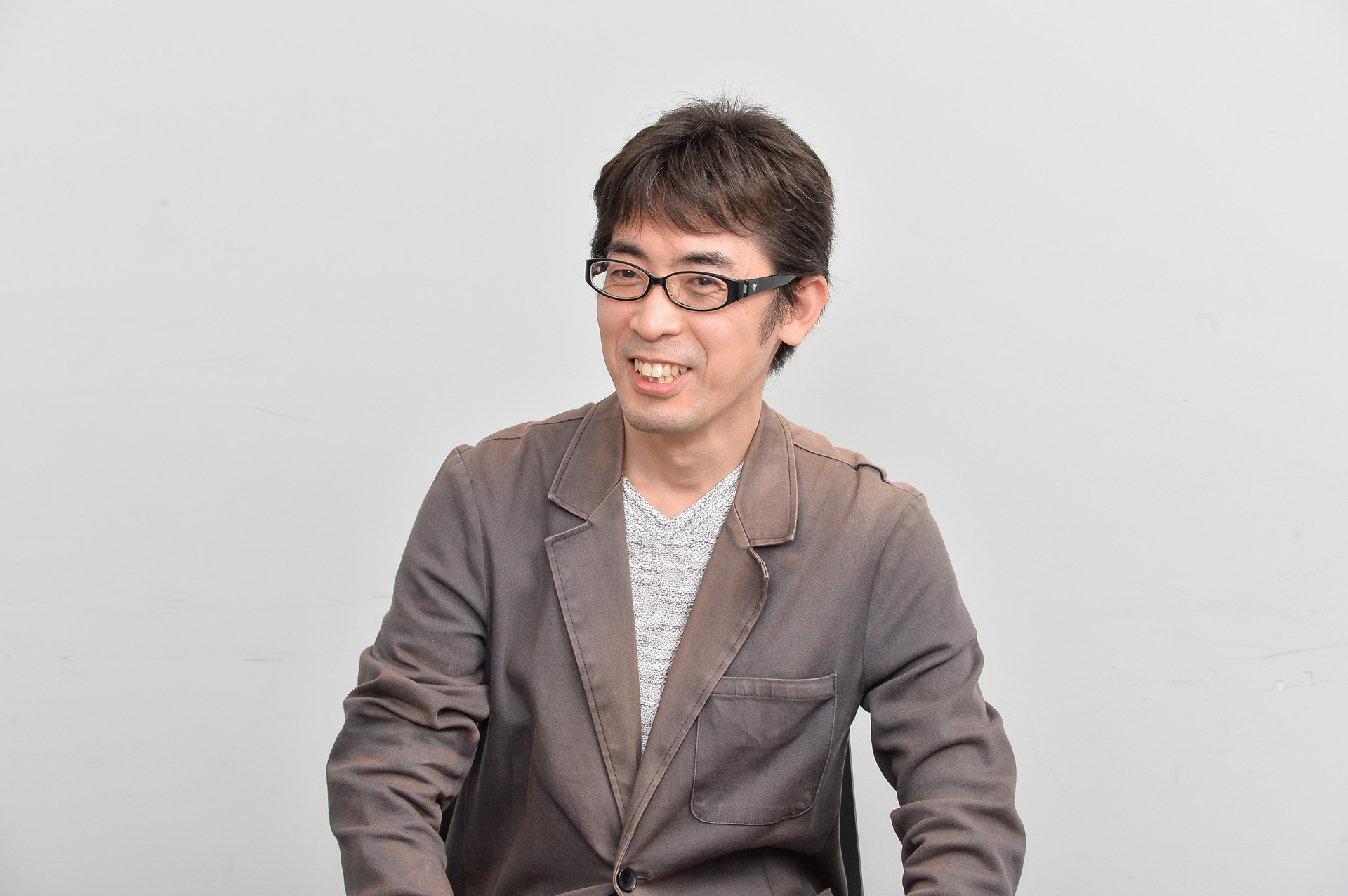
- Matsui
Did you play any other online games aside from Diablo?
- Agura
There were just so many online games that came out in the early 2000s and I ended up playing a whole bunch of them. I applied to beta test applications for any game I saw that was recruiting. Through that process, I started to accumulate knowledge on the pros and cons of many different games.
It’s a well-known story that Mr. Sakaguchi had the FFXI Development team play EverQuest, but have you ever tried Diablo, Mr. Matsui and Mr. Fujito?
* Hironobu Sakaguchi, one of the founders of the FF series.
* EverQuest is an MMORPG released in North America in 1999.- Matsui
I never played the PC version of Diablo, but I have played the PlayStation port of it. The PlayStation version didn't have online features, but I still enjoyed the hack-and-slash gameplay and item-based character customization. I was also impressed with many of the technological aspects of the game, like the friendly fire in cooperative mode and the randomly generated maps. Diablo II was later released when we were developing FFXI and I tried it out, claiming it was for “research purposes." That may have caused a slight delay in development though. (laughs)
- Fujito
When you’re playing Diablo, even just seeing that the enemy dropped an item with a different-colored name can be really exciting*. There were also those moments when you haphazardly open a door and a powerful enemy leaps out screaming, “Fresh meat!” and obliterates your party...* As Mr. Setsumasa mentioned, I also had the impression that death in Diablo came with high risks.
* In Diablo, item names are colored according to their rarity or purpose; normal items are white, magical items are blue, and rare items are yellow.
* The Butcher is an iconic mid-boss which resides in a particular room of level 2 in Diablo. Upon opening the door to its room, the Butcher cries, “Ah, fresh meat!” and charges towards the player. It also makes an appearance in Diablo III.

- Setsumasa
Some doors just weren’t meant to be opened. (laughs)
- Fujito
On the other hand, I was more drawn to Ultima Online’s “sandbox-style” gameplay, where I could gather materials and craft items. As I was fond of exploring the expansive in-game world, I was impressed by the sheer amount of work that must’ve gone into an overworld where players and monsters could be found pretty much anywhere.
That said, Ultima Online also allowed player-killing, so you couldn’t always just wander around carelessly. On many occasions, I’d walk into an area and end up as one of many corpses sprawled on the ground before I knew it.
The Dreamcast’s early emergence into the internet world
PSO was one of many online games that came out around the year 2000, but it wouldn’t have been possible without the Dreamcast released in 1998. Mr. Setsumasa and Mr. Agura, what were your thoughts on the Dreamcast?
- Setsumasa
Before development on the Dreamcast began, SEGA held an internal survey on the kind of console we ought to make and the kind of games we’d want to develop for it, and our development team was part of the survey as well. As you’d expect, many of the answers indicated that online games would be the next big hit with our players. That meant the console would need a modem, and I think that’s how the Dreamcast came to be.
- Matsui
I’m impressed by that foresight. If someone were to consult me about “network” and “online” back then, I would’ve referenced the GameBoy’s network cable. When Legend of Mana was released in 1999, we added a feature where memory cards could be used to share various things with friends, but by that time, the Dreamcast was already taking on the internet.
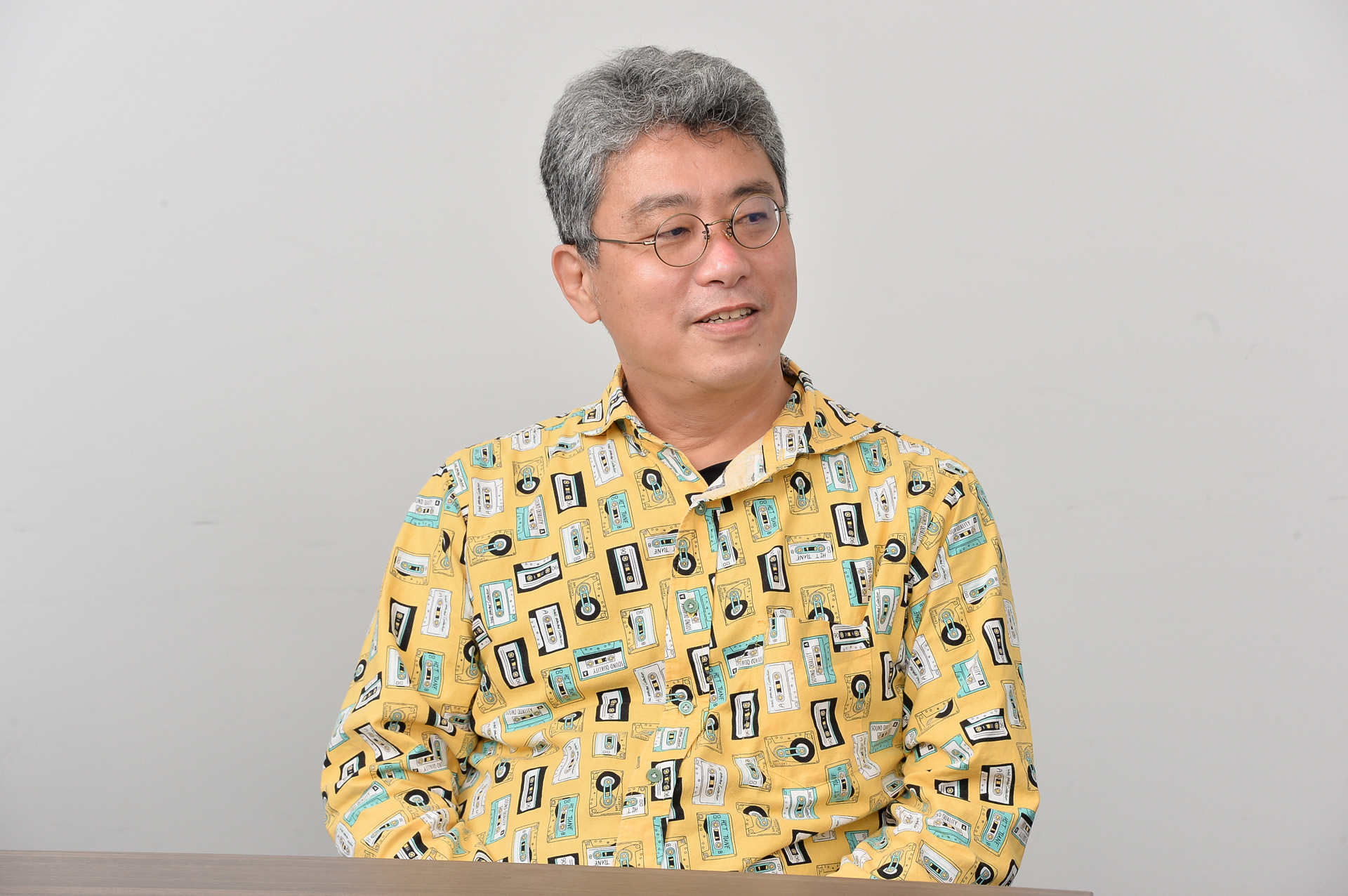
- Setsumasa
That said, even if we made a console capable of connecting to the internet, we assumed most people wouldn’t have an internet provider and made our own called Sega Provider*. Our CEO at the time, Okawa*, was very fervent about internet-related businesses, and I believe his support played a large role in that. The Dreamcast also had web browsing via Dream Passport*, which I imagine became the initial internet experience for many of our users.
* Sega Provider was a Dreamcast-only internet service provider in Japan which provided users with internet access free of charge until May 2000. It was acquired by ISAO (now Colorkrew) in June 2000 and renamed as isao.net.
* Isao Okawa, former CEO and chairman of SEGA.
* Dream Passport is a disc bundled with the Dreamcast which allowed users to browse internet websites on their console as they would on their PCs. - Matsui
Mr. Agura joined SEGA in 2000, so that’d mean he was hired after the Dreamcast was released.
- Agura
The Dreamcast was already out when I was still in school, so I wasn’t particularly interested in the console or its built-in modem, and only saw it as another new console. But when I was hired, I was immediately assigned to an online game, so from there the Dreamcast seemed like an online-only console.
- Fujito
When did you start working on PSO as an online RPG title?
- Setsumasa
By the time we finished developing Sonic Adventure (released December 23, 1998), it was already decided that our next title would be an online game. Well, I’d been constantly begging, “Please let me work on an online game!” so it was more like my wish had finally been granted.
Since ADSL* wasn’t commonplace back then, I imagine the network aspects were designed with narrowband in mind. Were there any issues that arose in terms of developing an online game in that environment?
* ADSL is a high-speed digital communication method which allows for broadband internet access. In Japan, ADSL rapidly started becoming widespread around 2001.- Setsumasa
First of all, creating a network environment was a lot of trouble. The modem required dial-up to access the internet, so the development process began from shopping at Akihabara to purchase the parts for building our own telephone line emulator. From what I remember, multiple modems had to be hooked up to a single PC, so I purchased an 8-way connector, compiled a Linux kernel, and went through other procedures of that nature, which game development teams would hardly ever do today.
* Linux is a Unix-based operating system. “Compiling the kernel” means to take the core programming of an operating system (kernel) and convert (compile) it from a human-readable programming language into machine code. - Matsui
It sounds like you started with a lot of hands-on work.
- Setsumasa
I sure did. There also wasn’t anyone who could answer any questions I had, so I had to do everything myself. I first put the network environment together, then tested to see if packets were being relayed through the network… I basically had to learn like that as I went. There were hardly any resources on network-related topics, and it was rough.
- Matsui
You did all of that by yourself? Didn’t you have a dedicated research team for that kind of thing?
- Setsumasa
I was on my own for the majority of it. Looking back, network-related matters were Okawa’s area of interest, so I think to myself, “Why didn’t I just team up with him?” (laughs wryly)

Even before the Dreamcast, SEGA had online multiplayer on Sega Rally Championship Plus for the Sega Saturn. Was that expertise available to you and others within the company?
- Setsumasa
The Sega Saturn’s online multiplayer used peer-to-peer (P2P) via XBAND* to connect players to each other through dial-up connections, so it was quite different from the Dreamcast’s internet access.
* XBAND was an online console gaming network developed by Catapult Entertainment in North America. Did the FFXI team face any similar network-related difficulties during development?
- Matsui
We did. There definitely was a “learn as you go” aspect to it. Our development would’ve been about two years after Mr. Setsumasa’s experiences, but even then, network-related matters were not something that could be accomplished by amateurs. Educational publications on the topic were basically limited to “What is TCP/IP?*” As for Unix*, although there were some complicated books that explained how to send and receive packets, the information they provided wasn’t applicable to online games and I only read them as supplemental material.
* TCP/IP are communication standards which enable devices to send data over networks such as the internet.
* Unix is an operating system which was conceived in 1969. In any case, once the network environment was ready, the next step would've been the actual game development of PSO. Did you encounter any difficulties during that process?
- Setsumasa
Back then, a game only cost money when you purchased the physical copy, and the concept of paying a monthly subscription for one wasn’t a norm yet. Our primary concern was whether we could provide a game that players would willingly pay a monthly subscription for, and that was part of the reason why we couldn’t blow our budget on servers and the like. In the end, we decided on a hybrid solution where some aspects of the game would rely on our servers, while others would instead be handled through P2P connections between clients.
- Matsui
Did you have any concerns related to narrowband dial-up connections, which were the norm back then?
- Setsumasa
The Dreamcast’s modem was capable of network speeds up to 33,600 bits per second, which roughly translates to about 4K bytes per second, meaning it was impossible for us to synchronize every in-game object across each client.
To top it off, too many player inputs happening at the same time would cause display lag, which we didn’t like, so we began by considering how much of the game we could desynchronize. For instance, we figured it was okay if enemies weren’t displayed in the same location across each client, since players wouldn’t be able to see what it looked like on other people’s screens anyway. (laughs) We looked for places where we could make compromises like that and managed to finish the game. - Fujito
PSO was probably intended to be a global title from the start, but were there any network-related issues with overseas connections?
- Setsumasa
There definitely were network-related issues, and we were worried if the game would be playable when overseas connections had a delay of several hundred milliseconds. Thankfully, the steps we took to desynchronize the game helped to make it surprisingly playable.
- Fujito
So even though the latency was an issue, the results turned out okay?
- Setsumasa
That's right. Aside from that, we had an issue with packet loss as packets reached their hop limit on overseas connections*. Seeing that made me realize just how physically far away the rest of the world was.
* A hop limit is the maximum number of networks or network devices over which a packet can travel before being discarded. - Fujito
So you sent the packets overseas? Would it have been possible, for example, to simulate those connections within Japan by intentionally delaying the packets?
- Setsumasa
No, it was something we had to try for ourselves, and it was only after we did that I realized that the packets weren’t being received. In those instances, we had help from SEGA of America and SEGA of Europe in conducting network tests in actual environments.
* Part 3 will be available on August 17, 2022.
© SEGA



